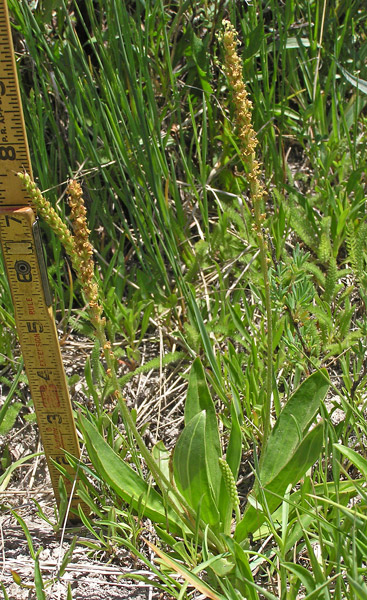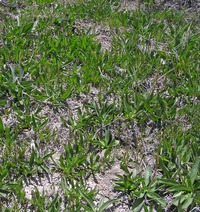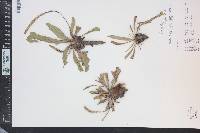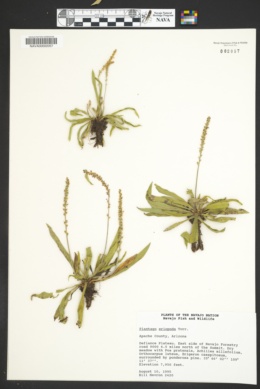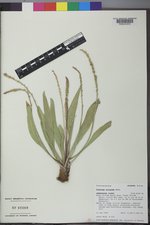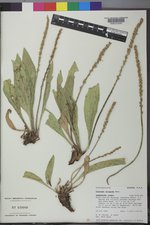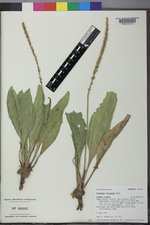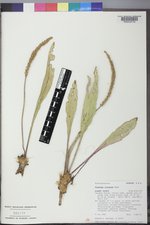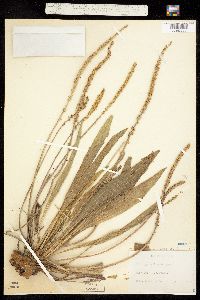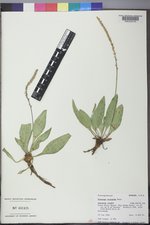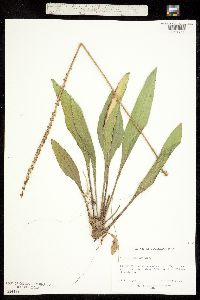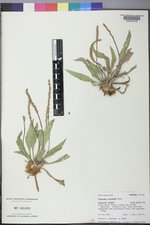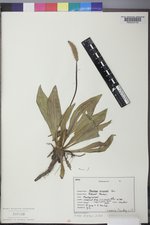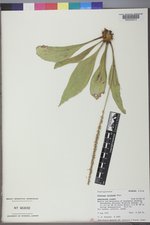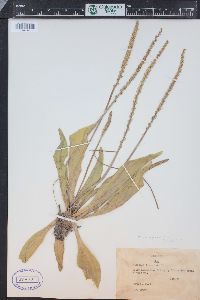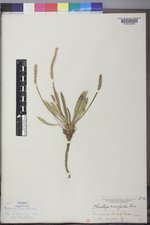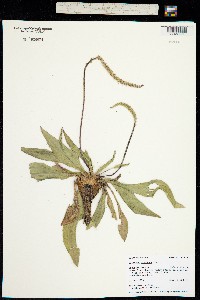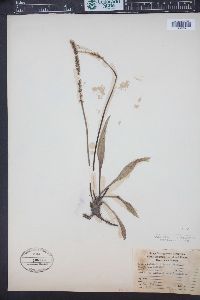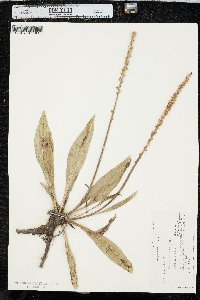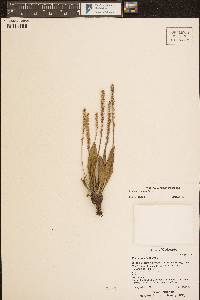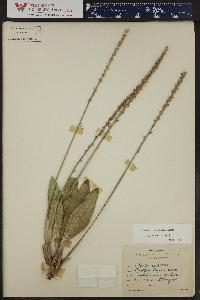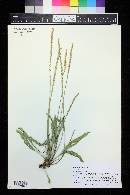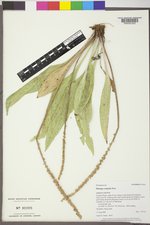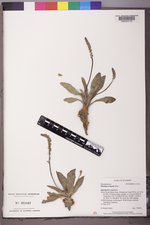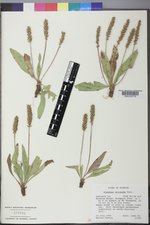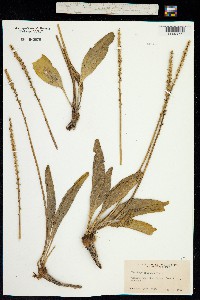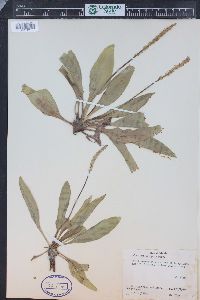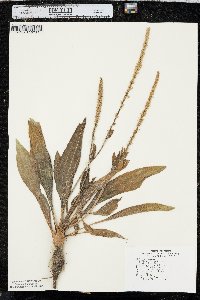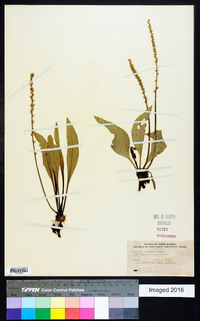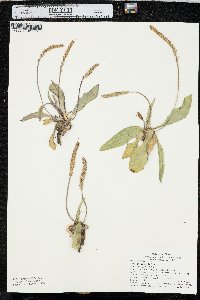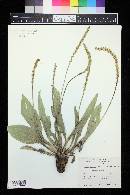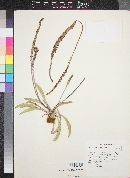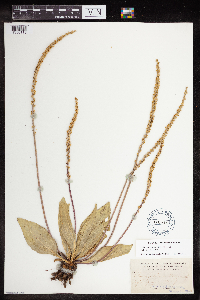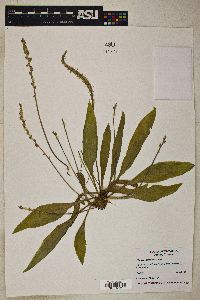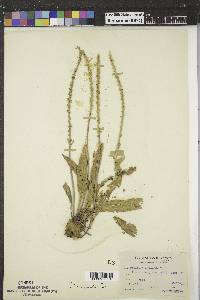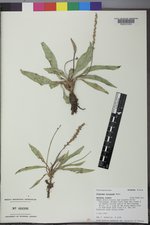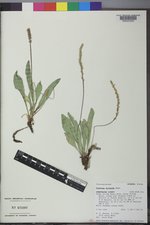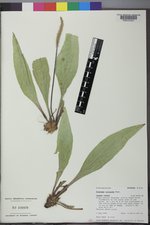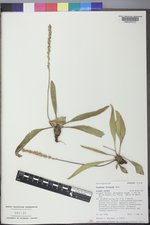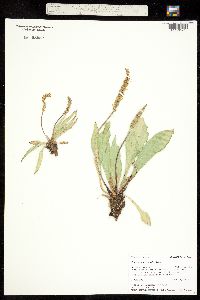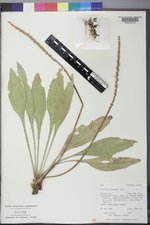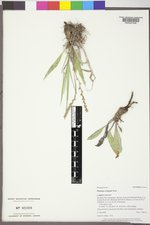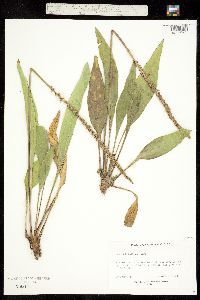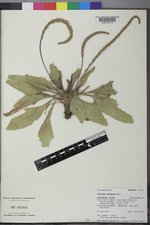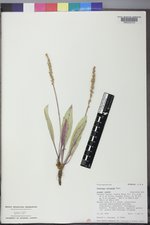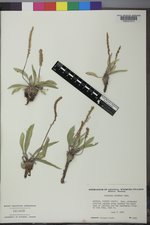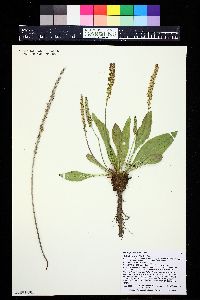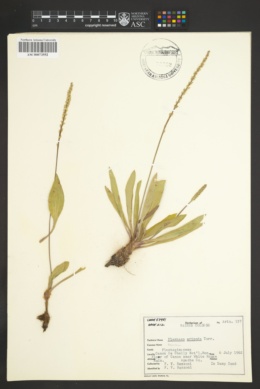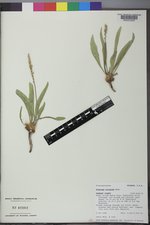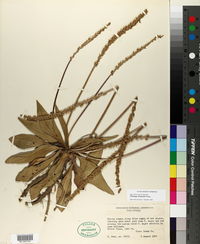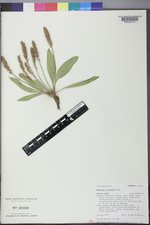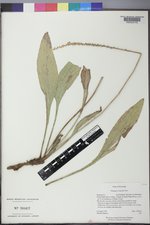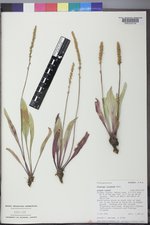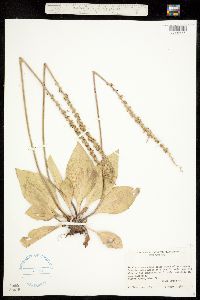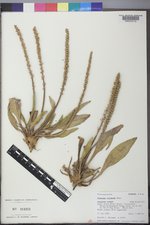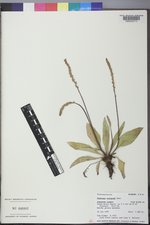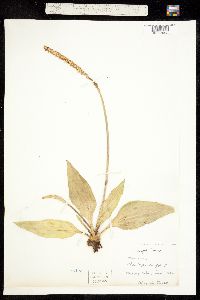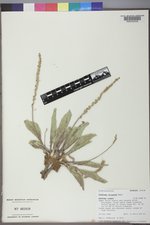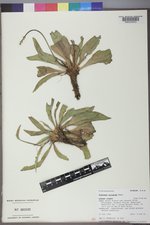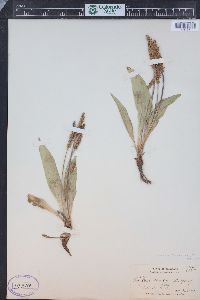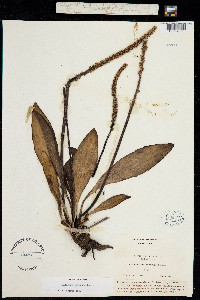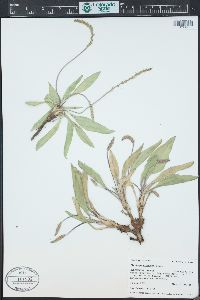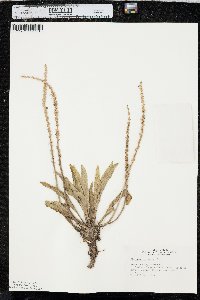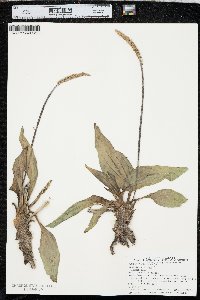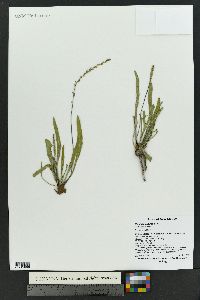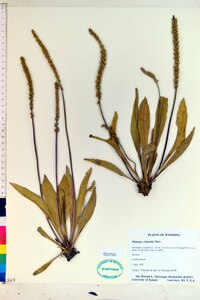Plantago eriopoda
|
|
|
|
Family: Plantaginaceae
Red-Woolly Plantain, more...redwool plantain, alkali plantain, redwood plantain, saline plantain
[Plantago retrorsa Greene, morePlantago shastensis Greene] |
Plant: Perennial herb; to 40 cm tall Leaves: petiolate; blades lanceolate, 5-12 cm long, 1.0-2.5 cm wide, attenuate at base, acute at apex, sparsely villous to glabrate, distinctly, 5- veined below, the margins with a few remote, shallow teeth INFLORESCENCE: pedunculate, scapose; PEDUNCLES 5.5-16 cm long, white-villous. SPIKES 2-10 cm long, interrupted near base; bracts ovate, (1.5-) 2 mm long, ciliate, with tufts of tan hairs in axils Flowers: perfect; sepals broadly elliptic, ca. 2.5 mm long, broadly scarious-margined; corolla lobes spreading or reflexed, subulate to narrowly ovate, 1.2-1.8 mm long; stamens 4 Fruit: FRUITS capsules, breaking well below middle; SEEDS 2, ellipsoid, concave, ca. 1.5 mm long, ca. 0.8 mm wide, light to reddish-brown, the outer surface slightly reticulate and shiny Misc: Alkaline marshes; 1700-2200 m (5600-7200 ft); Jun-Aug REFERENCES: Huisinga, Kristin D. and Tina J. Ayers. 1999. Plantaginaceae. Ariz. - Nev. Acad. Sci. 32(1). General: Perennial, up to 40 cm tall; root crown densely and conspicuously brown-woolly; taproot stout, short, accompanied by slender fibrous roots. Leaves: Basal, lanceolate, 5-12 cm long, 1-2.5 cm wide, sparsely villous to nearly glabrous, distinctly 5-veined, margins entire or with a few teeth, base gradually tapering to petiole, apex acute. Flowers: Inflorescence a cyme; buds oblong to ellipsoid, prickly, the prickles sometimes branched; sepals 2, prickly, each with a horn just below the apex, this usually prickly; flowers large, showy, 5-13 cm wide, the petals white; stamens numerous, yellow; flowers May-August. Fruits: Circumscissile capsule, narrowly ovoid, 3-4 mm long; seeds 4. Ecology: Meadows, often in alkaline habitats; 1700-2400 m (5500- 8000 ft); Apache, Coconino, and Pima counties; central and western U.S. and Canada. Notes: Plantago tweedyi (Tweedy-s plantain) is very similar to P. eriopoda, but is distinguished by the root crown sparsely to inconspicuously brown-woolly; spike is short and dense, 2-7 cm long; and the corolla lobes are triangular to ovate, 0.6-0.8 mm long. In Arizona it usually occurs in moist, non-alkaline meadows on the Kaibab Plateau. Plantago lanceolata (narrowleaf plantain) is an introduced perennial, mostly up to 65 cm tall; leaves are lanceolate, 4-24 cm long, 0.5-4 cm wide; spike is very dense, ovoid-conic, becoming cylindric, 1.5-8 cm long; bracts subtending the flowers are long-acuminate; the 2 sepals adjacent to the bract are connate, the apex entire or notched; and corolla lobes are spreading or reflexed, awl-shaped to narrowly ovate, 2-2.5 mm long. It is common along roadsides, in fields, and in other disturbed habitats, often in moist soils. Editor: Springer et al. 2008 Perennial with 1-several thickened roots, conspicuously brown-woolly at the crown; lvs thick and fleshy, elliptic, 5-15 cm, half as wide, acute, tapering to the margined petiole; lateral veins all descending into the petiole; scapes 1-3 dm, glabrous or nearly so; spikes slender, 5-20 cm, the axis exposed; bracts and sep about equal, nearly flat, rounded or obtuse, with narrow scarious margins; cor-lobes 1-1.5 mm, spreading or reflexed; fr ovoid, rounded above, 3-4 mm, circumscissile just below the middle; seeds 2-4, 2-2.7 mm; 2n=24. Salt marshes along the coast, Que. to N.S.; alkaline soil m the interior, Minn. and Io. to Mack., Yukon, and Wash., s. to Nebr., Colo., and Calif. Gleason, Henry A. & Cronquist, Arthur J. 1991. Manual of vascular plants of northeastern United States and adjacent Canada. lxxv + 910 pp. ©The New York Botanical Garden. All rights reserved. Used by permission. |

